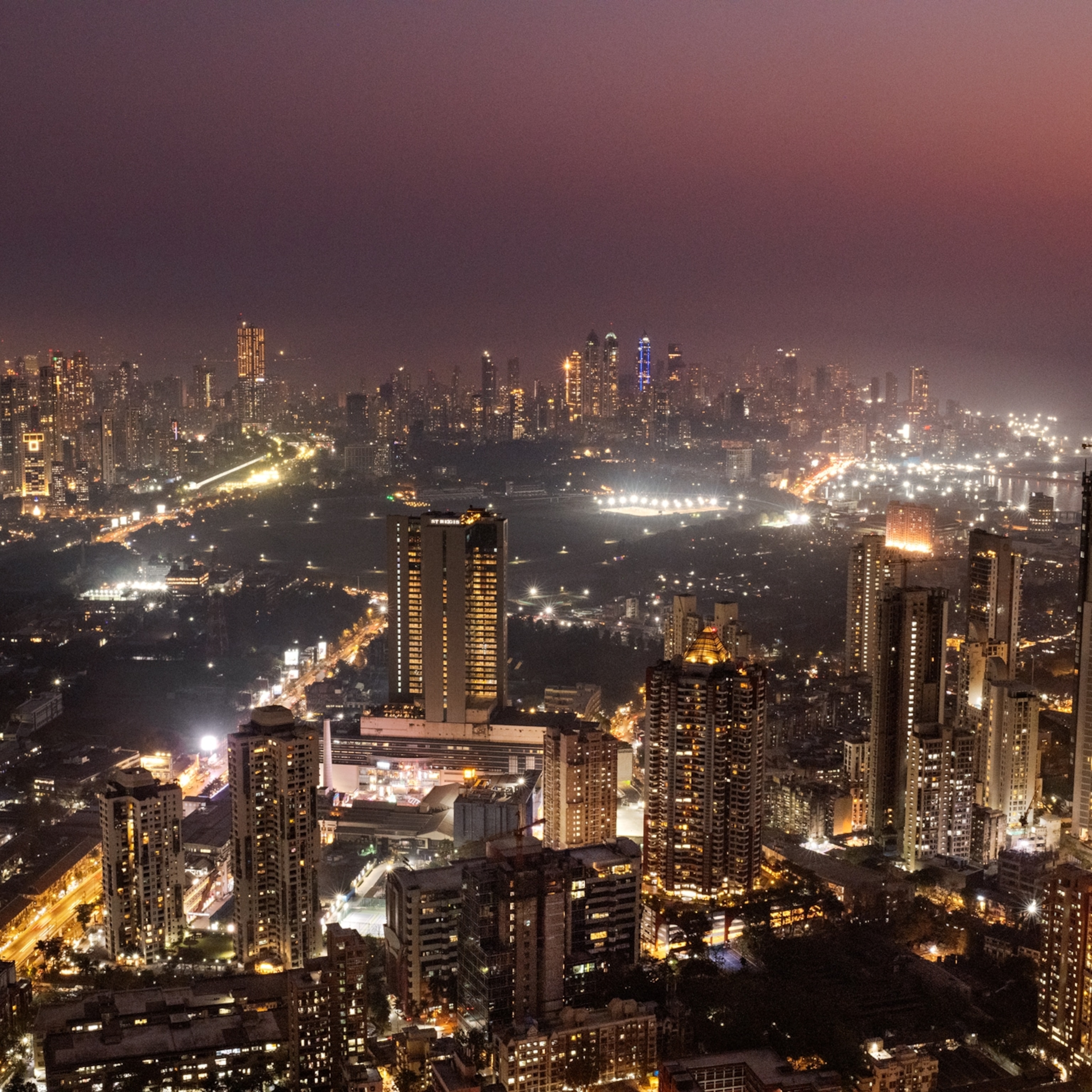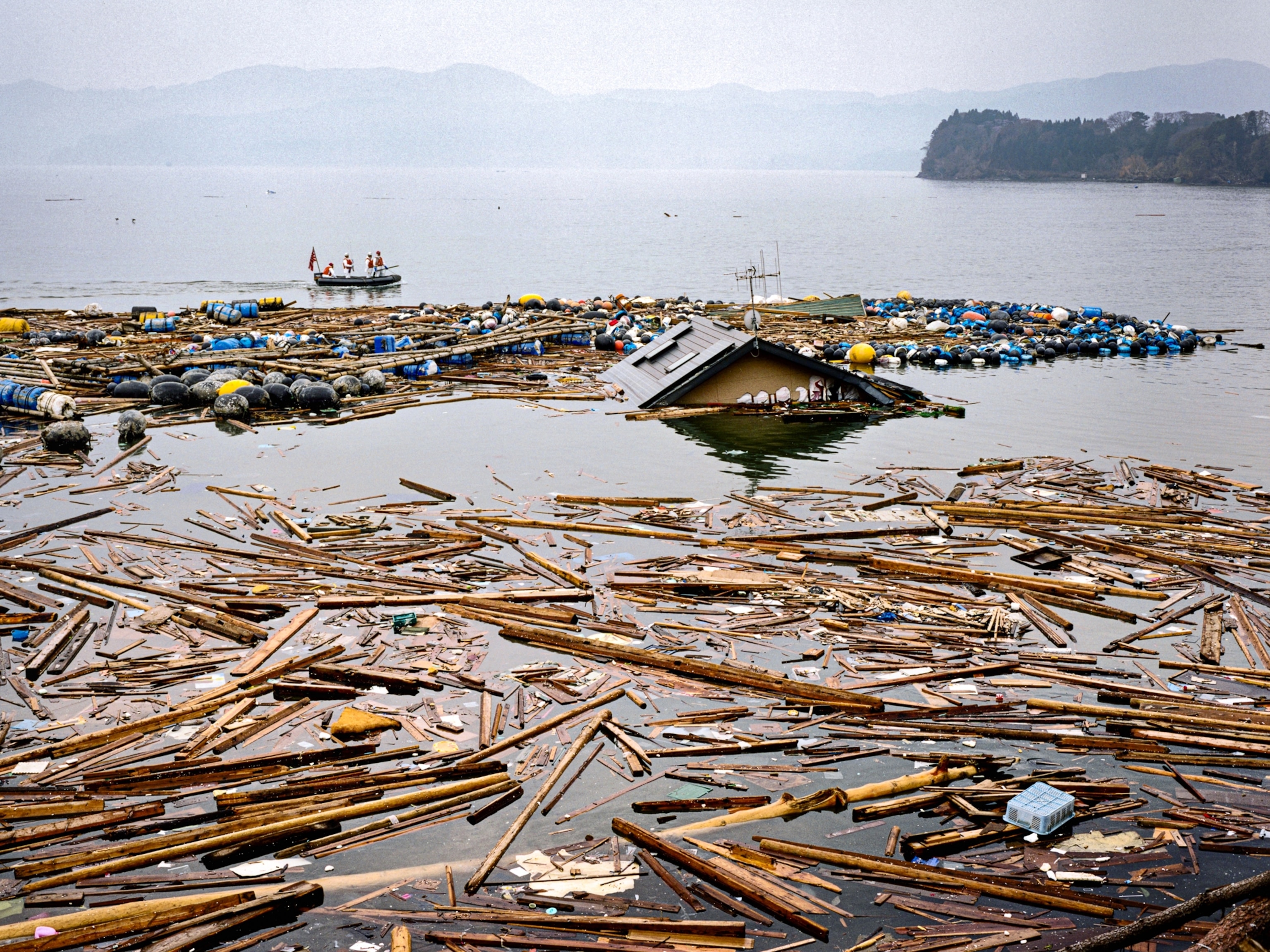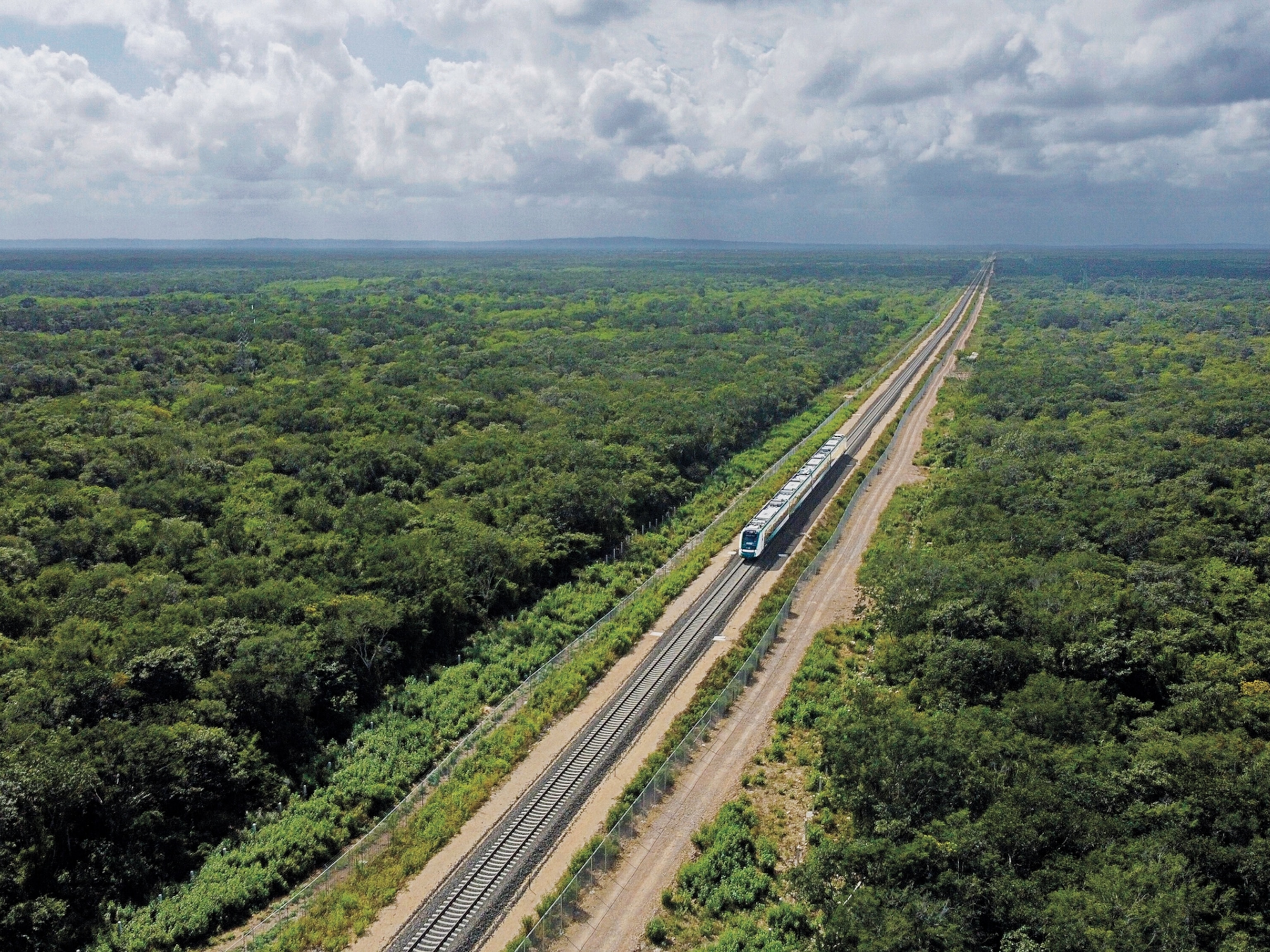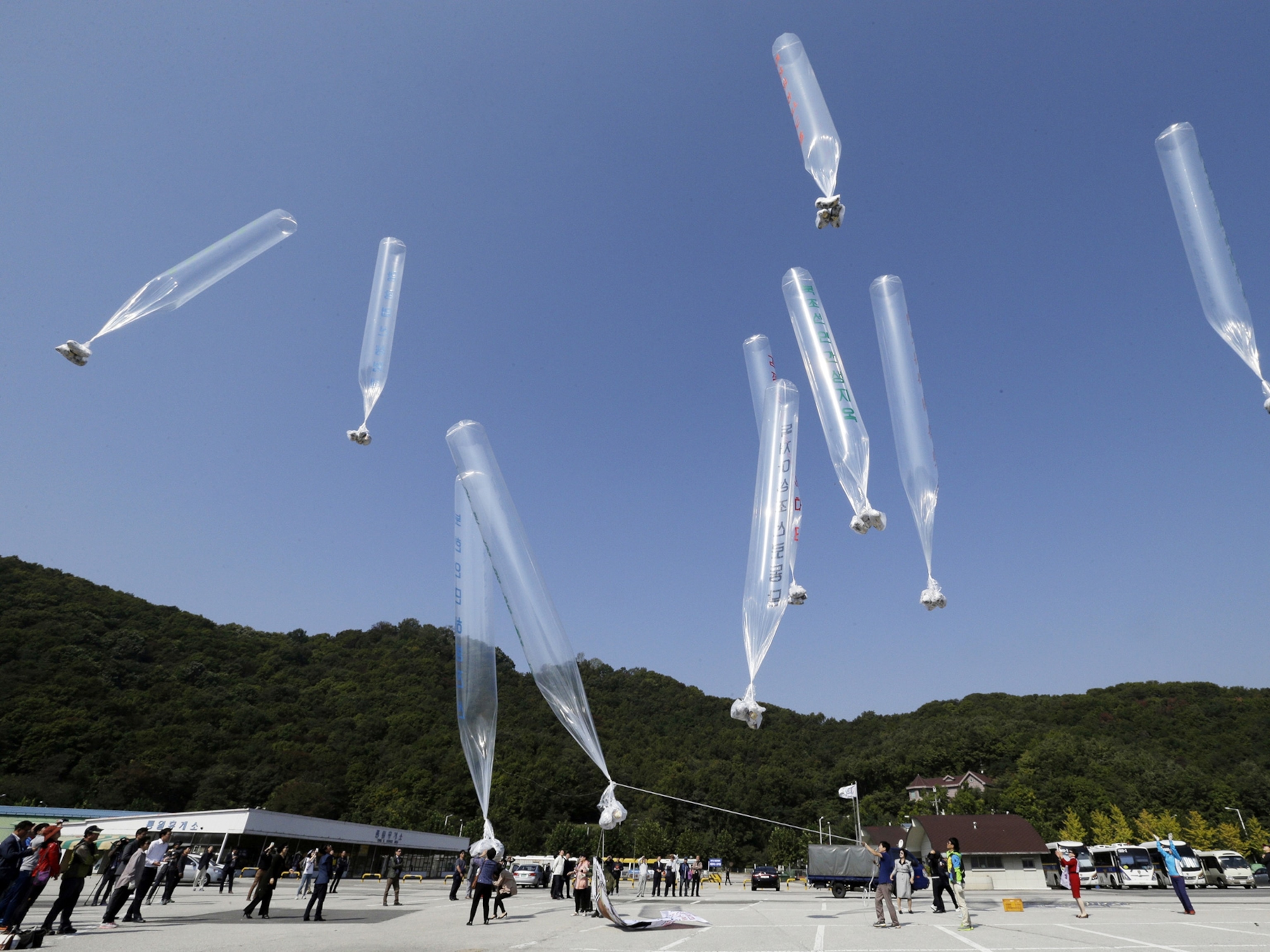Can India clean up its holiest river? It will take a village.
Ridding the Ganges of thousands of tons of plastic trash is a complex puzzle. India is starting to put the pieces together.
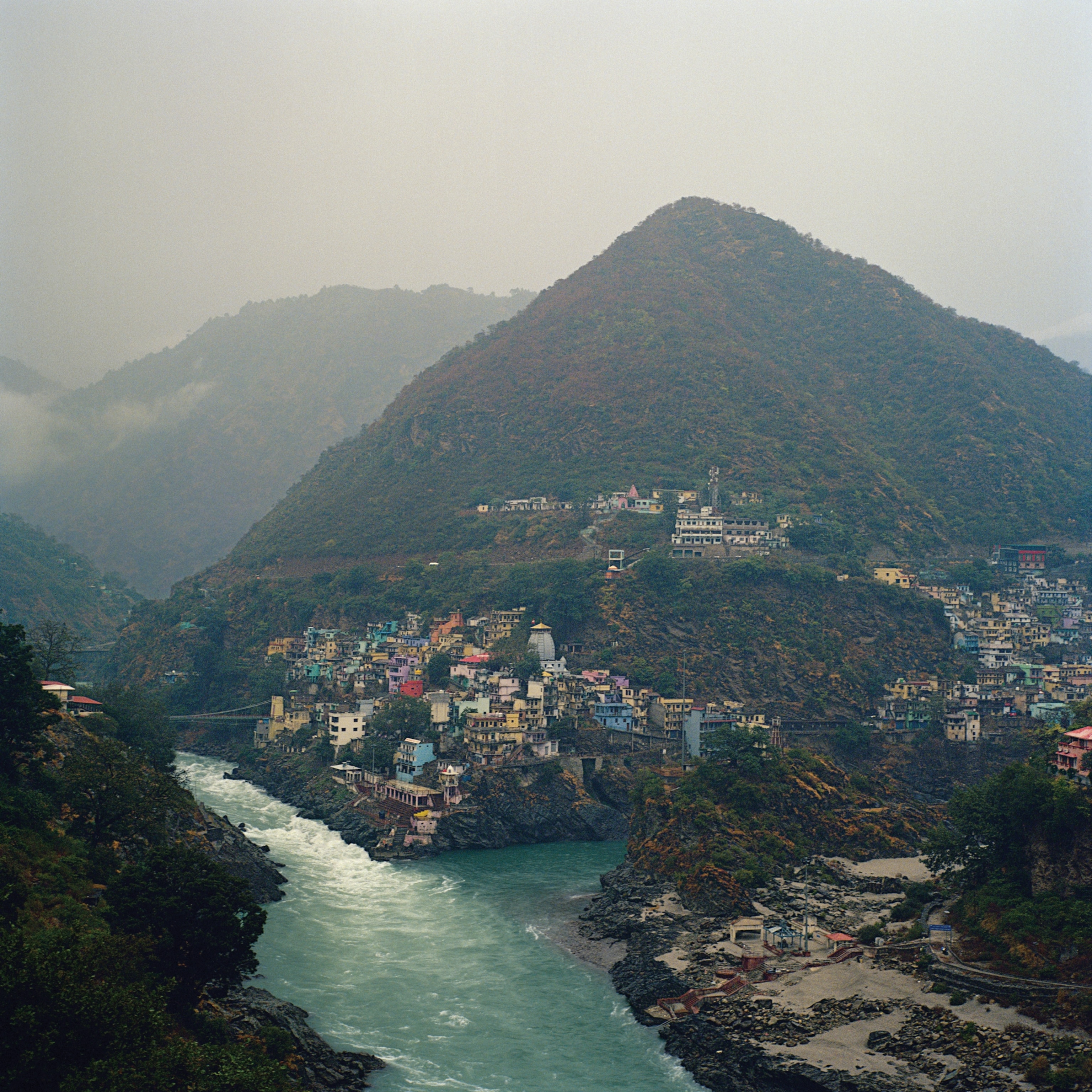
In the past decade, as the world has awakened to the growing accumulation of plastic debris in our oceans, the efforts to solve the mounting crisis have been numerous, imaginative—and insufficient. By 2040, the amount of plastic flowing annually into the sea is forecast nearly to triple, to 32 million tons a year. That means by the time a baby born this year graduates from high school, there will be, on average, a hundred pounds of plastic trash for every yard of coastline around the globe.
The message from scientists is, it’s not too late to fix it. But it’s past time for small steps.

Most of the research about plastic waste has focused on plastic already in the oceans and its potential for harm—it poses a lethal threat to a wide range of wildlife, from plankton on up to fish, turtles, and whales. Less is known about how the waste gets to the ocean. But it’s clear that rivers, especially rivers in Asia, are major arteries.
In 2019 the National Geographic Society sponsored a research expedition to one of those rivers: the Ganges, which flows across northern India and Bangladesh, through one of the largest and most heavily populated river basins in the world. A team of 40 scientists, engineers, and support staff from India, Bangladesh, the United States, and the United Kingdom traveled the full length of the river twice, before and after the monsoon rains that dramatically swell it. Sampling the river and the land and air around it, and interviewing more than 1,400 residents, the team sought to find out where, why, and what kind of plastic was getting into the Ganges—and from there into the Indian Ocean.
“The problem can’t be solved if you don’t know what it is,” said Jenna Jambeck, a University of Georgia environmental engineering professor who was one of the leaders of the expedition. It was her groundbreaking research in 2015, including her calculation that an average of 8.8 million tons of plastic end up in the oceans every year, that captured the world’s attention and helped transform marine plastics into a top environmental concern. Like most experts, Jambeck believes the solution lies not in cleaning up the oceans but in reducing and containing plastic waste on land, where most of it originates.
On a balmy November afternoon, I met Jambeck in the ancient Indian city of Patna, which sprawls along the south bank of the Ganges, some 500 miles inland from the mouth of the river in the Bay of Bengal. In a busy commercial district, Jambeck walked slowly along a row of shops and cafés, her eyes on the ground. She counted litter piece by piece, logging each one into a phone app that recorded its location. There were a lot of pieces to log: Patna, a rapidly growing city of more than two million, has had municipal house-to-house trash pickup only since 2018, and the practice of dumping trash in the streets has long been a problem.
During the 98-day expedition, Jambeck and her team conducted 146 such litter transects, each about the length of a city block, in 18 cities and villages along the river. They recorded 89,691 individual littered pieces. They also cataloged the products sold in nearby shops—because to design solutions to the waste problem, Jambeck said, you need to know what’s “leaking out of the system” and what’s not.
“Do you want to ban what ends up on the ground? Do you want a tax? Something else?” she asked. “Or, if you’ve banned plastic bags, for example, is your ban working?”

The top three plastic items Jambeck documented on Indian streets were filmy food wrappers, cigarette butts, and tobacco “sachets”—single-serving packets that are sold by the billions in Africa and Asia to deliver a wide range of products. About 40 percent of the littered items carried international brand names, including brands from companies headquartered in the U.S. or the U.K. Getting the attention of such companies was one of Jambeck’s purposes in doing this research.
“We need those people who are 6,000 miles away to come to the table and be open to change,” she told me.
Like climate change, plastic waste is a side effect of our hydrocarbon habit—most plastics are made from oil and gas—and its impacts, as well as the solutions to the problem, are both local and global. At least some of the litter I watched Jambeck record in Patna eventually would make its way into an open curb drain. From there a large pipe emptied it directly into the river, setting it on a course for the Bay of Bengal.
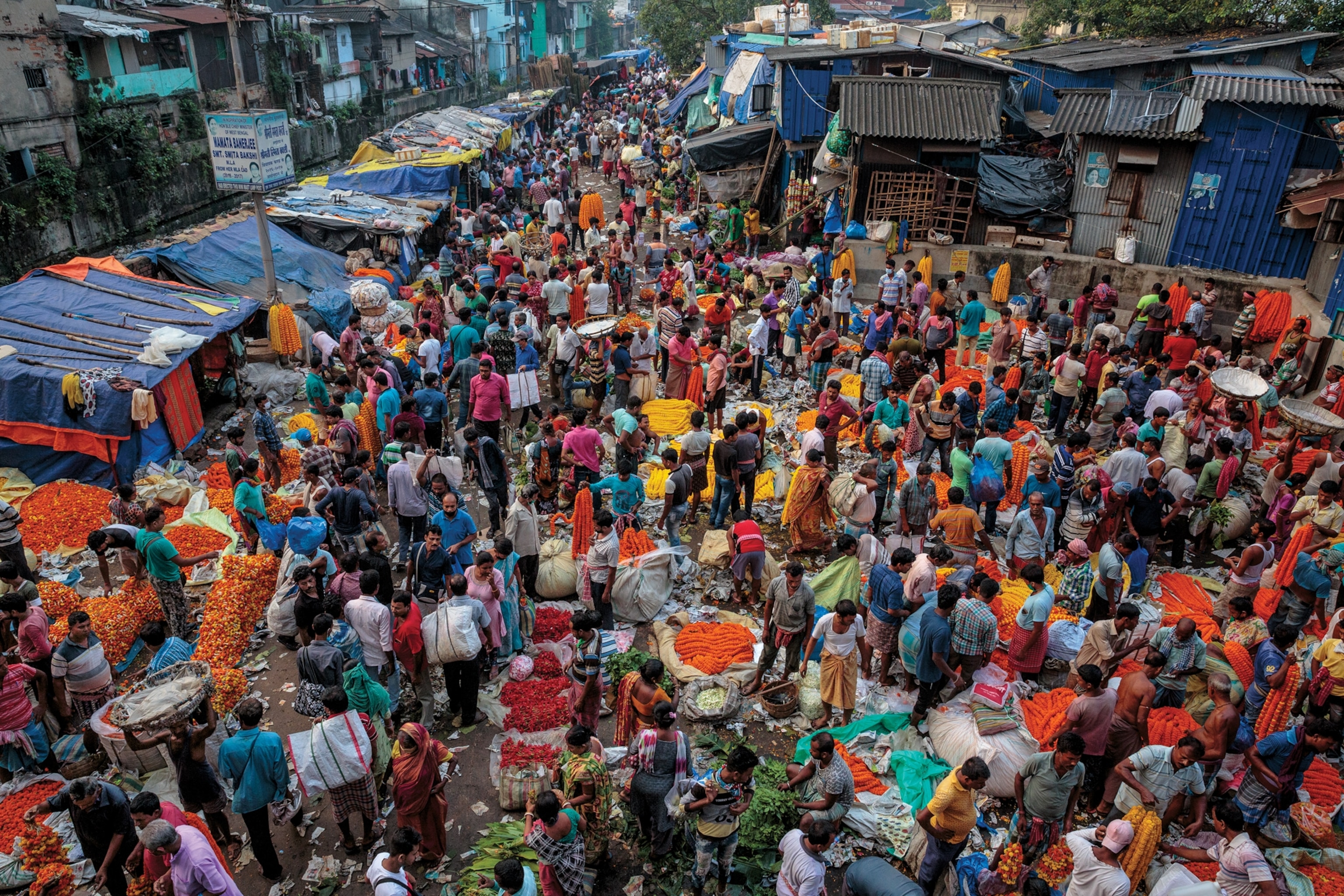
The Ganges River is one of the world’s largest, worshipped by a billion Hindus as Mother Ganga, a living goddess with power to cleanse the soul. The headwaters emerge from the Gangotri Glacier high in the western Himalaya, just a few miles from Tibet, and then drop down steep mountain canyons to India’s fertile northern plain. There the river meanders east across the subcontinent into Bangladesh, broadening as it absorbs 10 large tributaries. Just after it merges with the Brahmaputra, the Ganges empties into the Bay of Bengal. It’s the world’s third largest freshwater outlet to the ocean, after the Amazon and the Congo. It supports more than a quarter of India’s 1.4 billion people, all of Nepal, and part of Bangladesh.
So sacred is the river that its water, Ganga jal, has been hauled home in jugs by conquering armies and guidebook-toting tourists. Seventeenth-century traders believed it stayed “fresher” on long sailing voyages than water drawn elsewhere. Sir Edmund Hillary, who conquered Everest, was a fan. You can buy it today in blue bottles from Walmart.
Sadly, the Ganges also has long been one of the world’s most polluted rivers, befouled by poisonous effluents from hundreds of factories, some dating to the British colonial period. The factories add arsenic, chromium, mercury, and other metals to the hundreds of millions of gallons of raw sewage that still flow in daily. Plastic waste is only the most recent insult.
Yet even in the face of it, and of sometimes lethal counts of fecal bacteria, belief in the mythic purity of the Ganges endures—and it complicates long-running efforts to clean up the river. Sudipta Sen, who grew up in Kolkata and teaches South Asian history at the University of California, Davis, spent 14 years writing his book Ganges: The Many Pasts of an Indian River. He found the paradox of the modern river, so worshipped and yet so neglected, frustrating to write about.
“The river is really two rivers,” Sen said. “There is this belief that the river can clean itself and has magical properties. If the river can clean itself, then why should we have to worry about it? I have seen this. I have heard many people say the river cannot be polluted; it can go on forever.”
The Ganges reinforces that story line during the summer monsoon, when it is said to be “in swell.” At Patna, where the river is joined by several large tributaries, widening considerably, the monsoon converts it into a raging torrent that regularly floods Bihar, the mostly rural state of which Patna is the capital.
A large earthen berm stood between the river and the homes, but during the recent monsoon season, it hadn’t been enough to protect them. Some of the locals had only recently returned after evacuating during the flood. Chip bags and other litter were scattered about. Not a trash bin was in sight.
The fisherman I had come to see was asleep, so I climbed over the berm, still covered with sandbags, and sat on the ghat—the steps down to the river—watching people go about their morning chores. Five women crouched on the bottom step and washed clothes in the murky water. Several men arrived to bathe. Each emptied shampoo from a plastic sachet before discarding it in the river. When the men had finished, they offered water back to Ganga in cupped, uplifted hands.

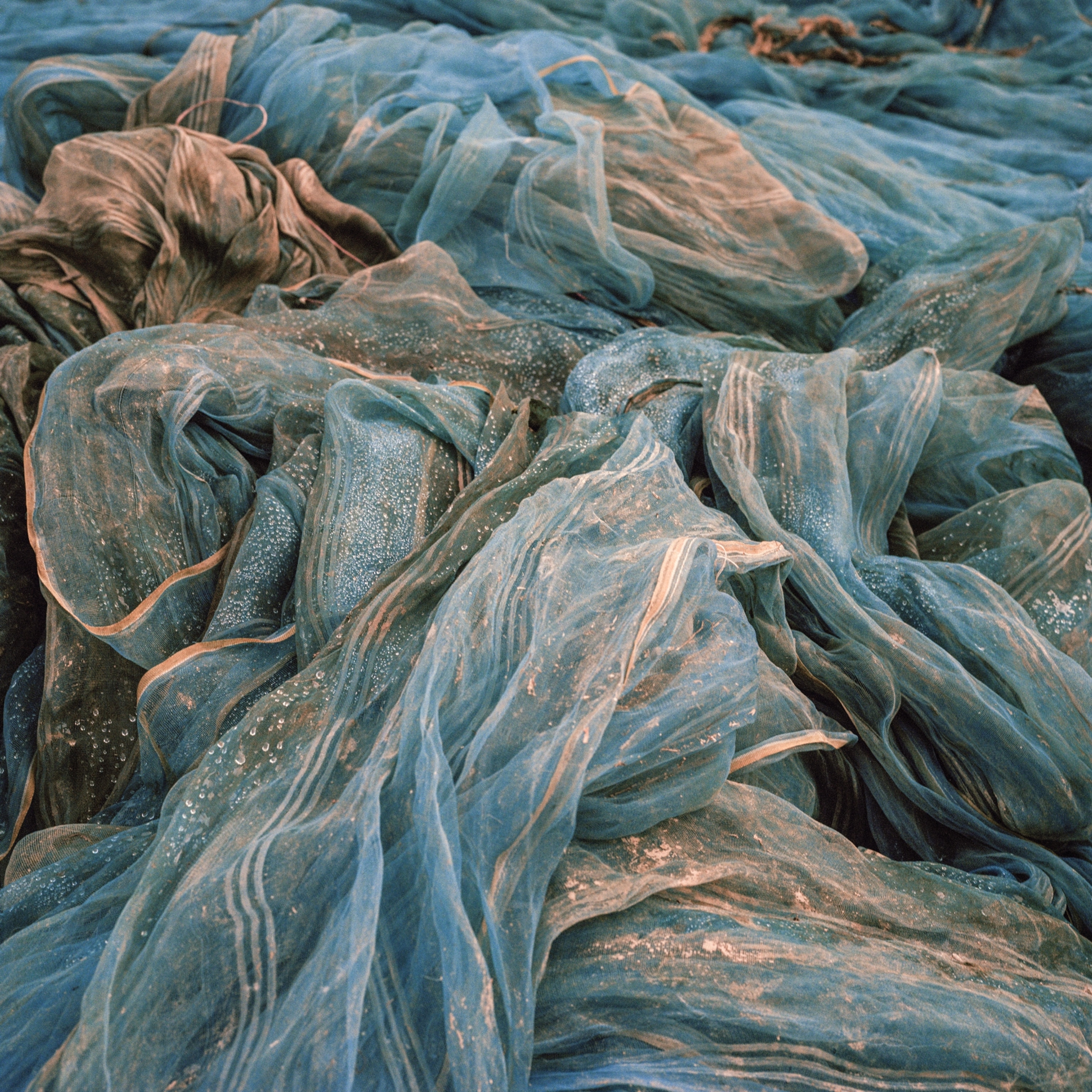
In Kolkata, I met a flower vendor named Goutam Mukherjee who told me he gave up selling fresh flowers years ago. We were standing in the center of one of Asia’s largest and most famous wholesale flower markets, where his booth was surrounded by stalls hawking garlands of fresh marigolds and other fragrant blossoms. Mukherjee ticked off the reasons why his plastic flowers, which were imported from China, were better than the real thing: They cost less, look real, and don’t wilt.
The miracle of plastics arrived in India recently enough that there is no Hindi word for the stuff, and in some places take-out food still comes wrapped in banana leaves. The love affair really took off in the 1990s, as the rapid growth of the global plastics industry coincided with the liberalizing of India’s economy. If in the U.S. the golden age of plastics ushered in the throwaway culture of convenience, in India, affordable plastic consumer goods simply made life better—not only for the expanding middle class but also for those who live near the bottom rung. Plastic storage containers, bags, and food wrap helped keep food fresh longer. Barefoot children could get cheap shoes, and inexpensive synthetic fabrics allowed them more clothes. Tiny sachets provided people with access to products they couldn’t afford to buy in larger volumes.
Yet even with the improving quality of life, the romance faded fast. Before the decade ended, India found itself swimming in plastic packaging waste that outpaced any ability to contain it. By the mid-1990s, newspaper accounts sounded the alarm. Plastic bags, handed out by the thousands in department stores in Mumbai, were “suffocating the city.” Delhi landfills were an impending “eco disaster.”
The problem has since spread beyond cities to rural areas and even nature reserves, where numerous species, from leopards to foxes to birds, have been seen eating plastic. At the Rajaji National Park outside Rishikesh, a pilgrimage city in the Himalayan foothills made famous in the West by the Beatles, who spent several weeks there in 1968, elephants are eating plastics in dump sites around the edges of the park.
“There are many places just outside the forest where villagers throw trash out, and the wild animals go there to eat,” ranger Mohammad Yusuf told me, as we toured the park’s grassy meadows and stands of tall pines. “I have seen plastic in elephant poop many times in the last five years.”
In nearly every nation struggling to contain plastic waste, the problem is primarily packaging, most of which is discarded immediately after use. Globally, it accounts for 36 percent of the nearly 500 million tons of plastic manufactured annually. India’s problem has less to do with per capita consumption than lack of adequate waste collection. In the United States, a person creates an average of 286 pounds of plastic waste a year—the highest rate in the world and more than six times India’s rate of 44 pounds per person. But the U.S. has a more or less functioning system of trash collection and disposal.
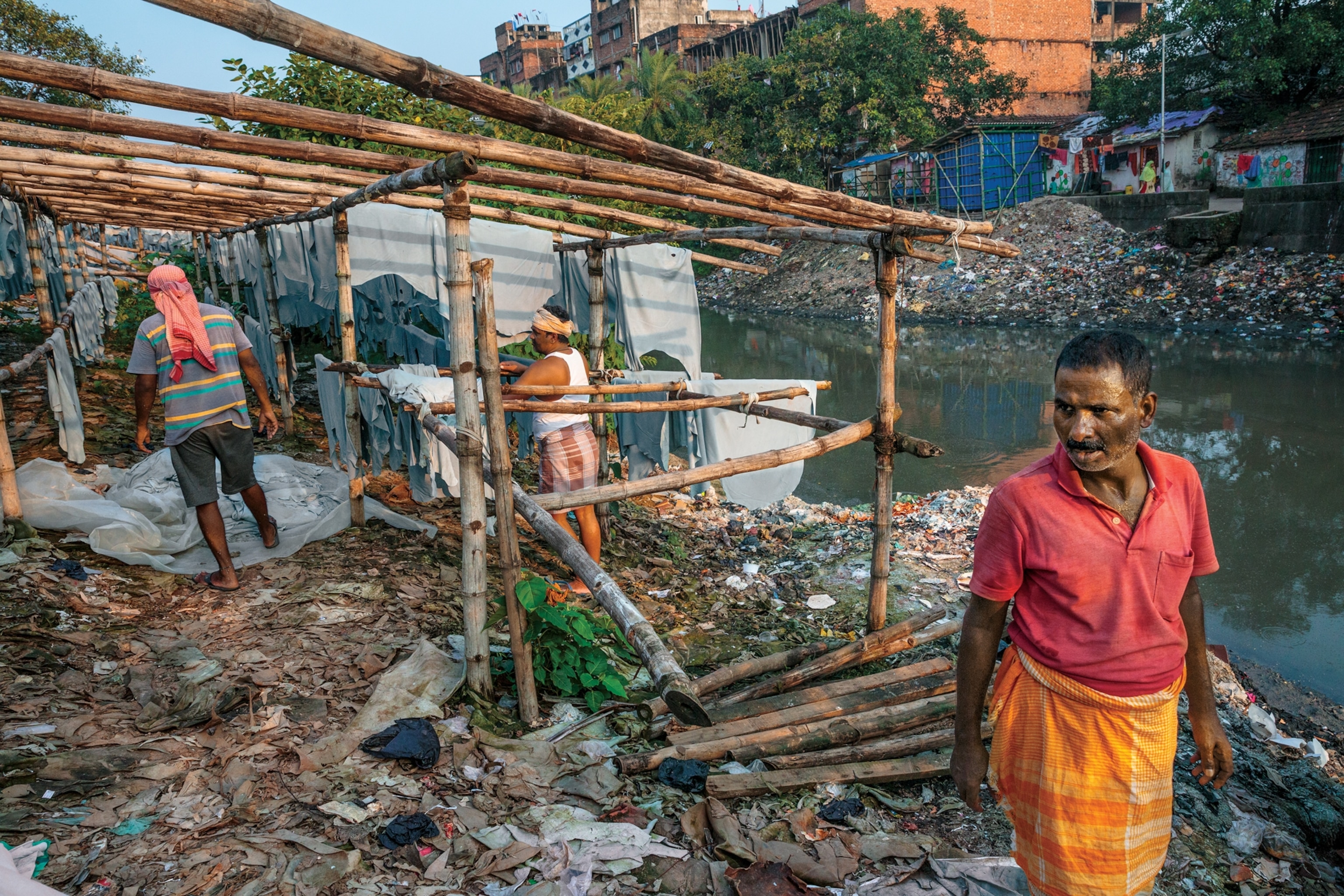
Trash collection in India’s cities is often inefficient, and collection rates are low. The situation is more disheartening in rural areas, where about two-thirds of Indians live. In the state of Bihar, which has a population of 129 million, roughly the size of Japan’s, plastic waste gets burned or dumped in ad hoc sites, where foraging cows and other animals inadvertently consume it. Or it’s deposited on a sandbar for Ganga to carry away.
Heather Koldewey, a marine and freshwater scientist at the Zoological Society of London and co-leader of the expedition, says she came to understand the river’s flushing power in a new light as she traveled the length of the river. One large municipal dump the team visited—unofficial, but used by city trucks—was so close to the riverbank that the Ganges devoured a portion of it during each monsoon.
“As soon as you’d get to a town or anything smaller, there was no waste management at all … It was like they fell off a cliff,” Koldewey told me on the river one morning, as she collected water samples from an inflatable boat. “The fact is, the biggest waste management infrastructure is the river itself. People would put their waste along dry river channels in recognition that it would all be taken away.
“That’s not an easy thing to fix. If you are replacing the river with a waste management system that is equivalent, that becomes quite significant in terms of cost.”


Could you instead just collect waste from the river itself? In 2017, as global concern about ocean plastics was cresting, two studies were published that came to a surprising conclusion: A small number of rivers—one study identified 10, the other 20—were responsible for the overwhelming bulk of what rivers put into the ocean. Most of the rivers on the two lists were in Asia. The Ganges figured prominently on both.
The image of waste-choked rivers was shocking, but the studies’ conclusions suggested a silver lining: By cleaning up just a few rivers, one might stanch the flow of plastic into the ocean—or at least make a big dent in the problem. That hope turns out to have been naive. A more recent and comprehensive survey by some of the same scientists found that you’d actually have to clean more than a thousand rivers to cut the amount flowing from rivers to the sea by 80 percent.
Nevertheless, in Asia, Africa, and both Americas, river-cleansing operations are under way, and they’re doing some good. The grandfather of the effort is Mr. Trash Wheel, a googly-eyed trash-eating barge that has been collecting rubbish in Baltimore’s Inner Harbor since 2014. But the most ambitious river cleaner is Boyan Slat, the 27-year-old founder of the Ocean Cleanup, a nonprofit in the Netherlands.
Affordable plastic goods made life better in India, but the pileup of plastic waste outpaced the nation’s ability to contain it.
Slat came to fame as a teenager, when he announced a grand plan to sweep up the Great Pacific Garbage Patch, a collection of loose marine debris, much of it plastic, that swirls around the North Pacific. He raised $30 million and launched his contraption: a floating, 2,000-foot-long, U-shaped boom that skims waste from surface waters. Several marine scientists told him it was a terrible idea—that he would have to operate his device indefinitely, at unsustainable costs, as long as plastic flows into the Pacific, and that it would be virtually impossible to remove microplastics because they are so tiny and spread throughout the water column. But Slat persisted, and his device is still out there, mostly gathering abandoned fishing nets. Even critics praise it for that.
Meanwhile, Slat has turned his attention to rivers. It was his organization that funded the new study showing how many rivers were significant sources of plastic pollution. In 2019, he unveiled a solar-powered barge similar in design to Mr. Trash Wheel and announced plans to clean the thousand worst rivers within five years. The pandemic delayed work; so far, Slat’s “Interceptors” are operating in Indonesia, Malaysia, Vietnam, and the Dominican Republic. Together with the Pacific device, they have collected more than 2.4 million pounds of trash.
Though Slat has taken on the Pacific, even he thinks trying to skim plastic from large continental rivers, including the Ganges, would be the wrong approach.

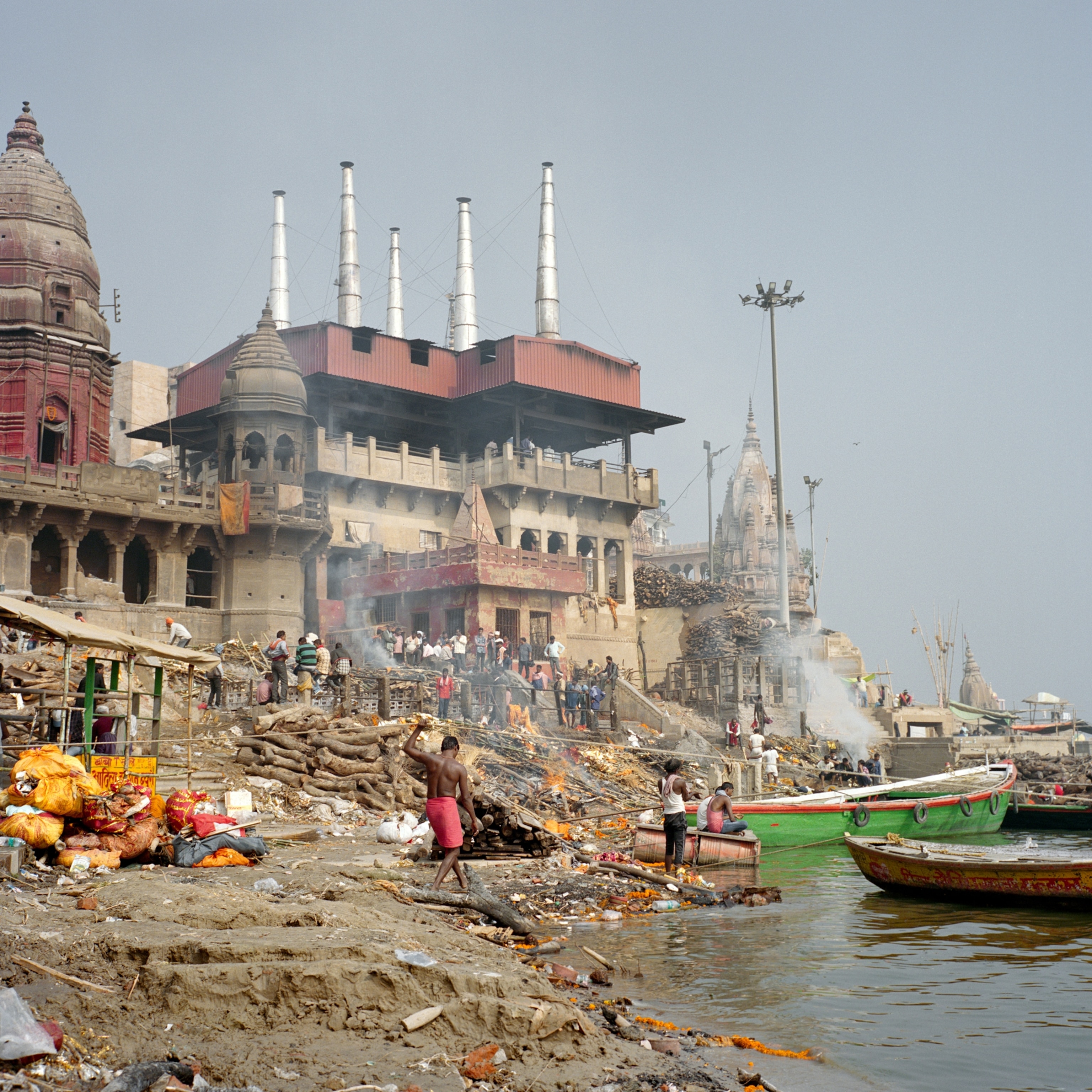
“It’s too wide, and the trash is diffuse,” he said. The better strategy would be to attack smaller tributaries, to “go to the cities in the delta (Dhaka and Kolkata) and deploy in the small streams of these cities.”
After I returned from India, I visited John Kellett, the inventor of Mr. Trash Wheel, at his marina in an inlet south of Baltimore. He was finishing work on his fourth trash wheel, which later was deployed on a stream near the downtown football stadium of the Baltimore Ravens. The four have collected 3.5 million pounds of trash and dramatically transformed the harbor’s appearance. But Kellett was skeptical of a global effort.
“It’s good that the interest in it is strong, but it’s just one piece of the puzzle,” he said. “I don’t think we’re ever going to clean up the oceans by tackling one river at a time. It needs to go hand in hand with policy changes and behavior changes as well.”
The Ganges is worshipped by Hindus as a goddess with the power to cleanse souls—and itself. That complicates efforts to clean up the river.
Waste collection in India would be even more dysfunctional if it weren’t for the “informal sector”: the army of independent operators who collect plastic waste from households to sell for recycling, and the waste pickers, who scavenge at dumps or on the streets.
These workers, estimated at nearly 1.5 million, are one reason you don’t see many plastic bottles on Indian streets—bottles are the highest value recyclables. Plastic waste makes up roughly half of waste pickers’ earnings, and bottles made of polyethylene terephthalate (PET) account for about half of the plastics collected, Bharati Chaturvedi, director of Chintan, a nonprofit that supports waste pickers, told me.
The informal sector is largely responsible for India’s high recycling rate, estimated at 60 percent. (In contrast, the U.S. recycles less than 30 percent of its trash overall and just 9 percent of plastic.) But there’s no money in nonrecyclables, and so bags, food wrappers, sachets, and so on don’t get picked up. Instead they litter Indian streets and wash into the Ganges.

Last October, Prime Minister Narendra Modi launched phase two of his “Clean India” campaign. In the first phase, the country had installed nearly 90 million toilets in a bid to end open defecation, which remains common in India. One goal of the second phase is to make cities garbage free. Modi’s government is building waste-to-energy plants—that is, incinerators that generate electricity. It also has announced a wide-ranging national ban on the manufacture and use of single-use plastics. Scheduled to take effect in July, the ban will cover thin shopping bags, foam containers, cutlery, cups, plates, straws, candy and ice-cream sticks, certain films, and other disposable plastics.
In India, however, the gap between ambitious national legislation and its enforcement at the local and state levels is sometimes large. Existing federal waste regulations are “absolutely marvelous, everything you could ever want,” said Robin Jeffrey, co-author with Assa Doron of Waste of a Nation, a study of India’s garbage. “Except nobody in the country could come within a bull’s roar of achieving them.” India has been trying for more than 35 years to limit discharges of sewage and factory waste into the Ganges—so far with little success.
The pandemic slowed government action on projects to clean India. It also led to a surge in plastic waste here, as it did globally, as people in lockdown ordered more take-out food and home deliveries.
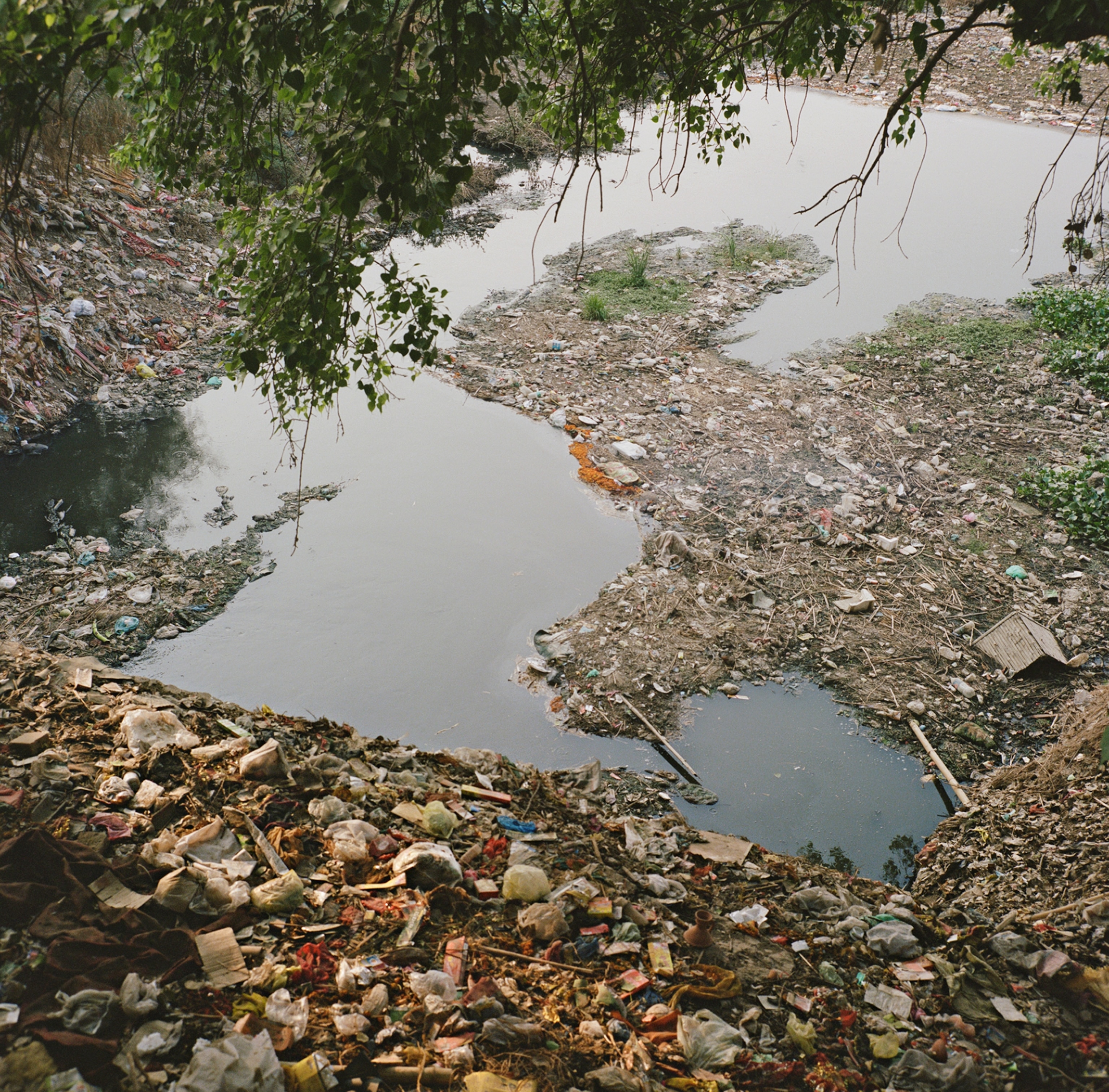
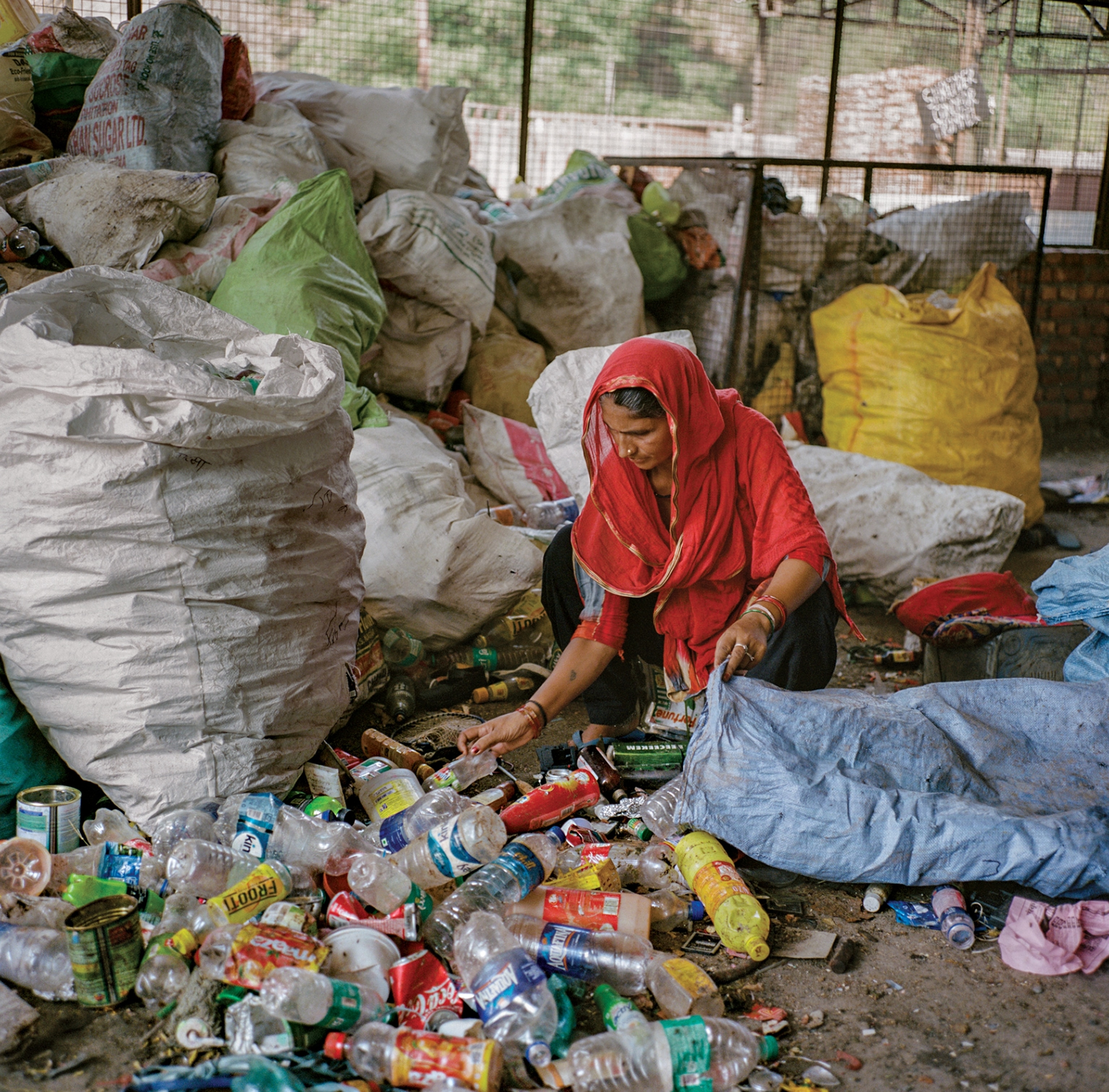
“Post-pandemic, civil society has a better appreciation for plastic and its role in saving humankind,” said Deepak Ballani, director general of the All India Plastics Manufacturers’ Association. “At the same time, the awareness about environmental impact resulting from littering has increased severalfold.” Like the plastics industry elsewhere, Ballani’s group favors recycling and opposes bans, arguing that they cost jobs and that the problem is not single-use plastics themselves but the way people dispose of them.
Since 2016 the Indian government has been working on new regulations that would require producers of plastic packaging to take responsibility for the cost of collecting and recycling their disposable products. Similar regulations, known as extended producer responsibility, or EPR, have helped curb plastic waste in the European Union since the mid-1990s. In the U.S., the plastics industry has opposed national legislation. Only Maine and Oregon have passed laws requiring EPR for plastic packaging.
Meanwhile, the amount of plastic waste flowing into the ocean keeps increasing. The forecast that it will almost triple by 2040 under a business-as-usual scenario comes from a report drafted by Pew Charitable Trusts and Systemiq, a London-based environmental and investment company. All the localized bag bans, bottle bills, and recycling commitments you hear about would at best shave a few percent off business as usual, the report concludes; solving the plastic waste problem will require all of the above. But it also will require governments to fundamentally realign the plastics industry’s economic incentives. In particular, if we don’t want plastic waste in the ocean to double or triple, we have to keep plastic production from doubling on land—which is what the industry is projected to do if it’s allowed to do business as usual.
In Asia, Africa, and both Americas, river-cleansing operations are under way. But the Ganges is too wide, and the trash in it too diffuse.
Pew and Systemiq are hardly the only voices prescribing such an approach. In December 2021, the National Academies of Sciences, Engineering, and Medicine recommended the U.S. develop a national strategy to reduce plastic waste, one that could include a cap on virgin plastic production. Such a cap would help address the climate crisis as well; the plastics industry accounts for about 6 percent of global oil consumption. The two crises are linked. And the suggestion that the solution to both requires leaving oil in the ground, which once was considered radical, has become part of the mainstream conversation.
In India too, the calls for action have become more urgent and widespread. Brajesh Kumar Dubey, an environmental engineering professor at the Indian Institute of Technology Kharagpur, told me he was surprised, as he traveled the Ganges Basin on the National Geographic expedition, to meet so many “small islands of people” working to raise awareness about environmental issues. But then, his country has changed so much, and developed so fast, in the past 30 years.
“If someone can bring all these islands together, it can achieve more and tackle this problem in a much better way. Behavior will change,” Dubey said. “I am very much an optimist, a glass-half-full person.”

Unlike the effort to fight climate change, cleaning up plastic litter in a river basin would have an immediate and visible benefit for the people who live there. But like the fight against climate change, the struggle can sometimes seem almost Sisyphean—and at the same time essential, if we are to avoid altering the planet irrevocably.
Toward the end of my stay in India, I traveled to Sagar Island, at the western end of the 200-mile-wide Ganges River Delta. Sagar sits on the Bay of Bengal at the mouth of a distributary of the Ganges called the Hooghly, 75 miles downstream from Kolkata. To Hindus, this outlet of the river has special spiritual significance. Every January, thousands of pilgrims come to the island to bathe in the waters where Mother Ganga meets the sea.
At the island’s southwestern point, near a lighthouse the British installed to guide ships into the mouth of the river and on to Kolkata, the beach was trash free when I visited; Ganga had done her monsoonal cleansing well. As I walked along, passing some out-of-season pilgrims, a few stray cows, and a funeral party scattering ashes in the water, I thought of all the other gifts that Ganga bestows on Sagar these days.
According to measurements made by Koldewey’s team, aside from carrying away the visible trash, the monsoon rains wash three billion microfibers a day out the main channel of the river into the Bay of Bengal. There they join the growing swirl of tiny plastic fragments in the oceans, whose harmful effects on marine life are just beginning to be understood.
One of the expedition’s experiments, dubbed Message in a Bottle, involved releasing a fleet of 25 bottles equipped with electronic trackers to better understand how plastic behaves in rivers and their outlets. Three bottles were released at the mouth in Bangladesh. In the sea, plastic moves easily and can travel hundreds of miles in a matter of weeks. Not long after my visit to Sagar, the three bottles passed by where I had stood. They were riding the East India Coastal Current, destination unknown.
The National Geographic Society, committed to illuminating and protecting the wonder of our world, funded the Sea to Source: Ganges expedition. Learn more about the Society’s support of Explorers. Watch the full 360 videos here.
This story appears in the April 2022 issue of National Geographic magazine.

